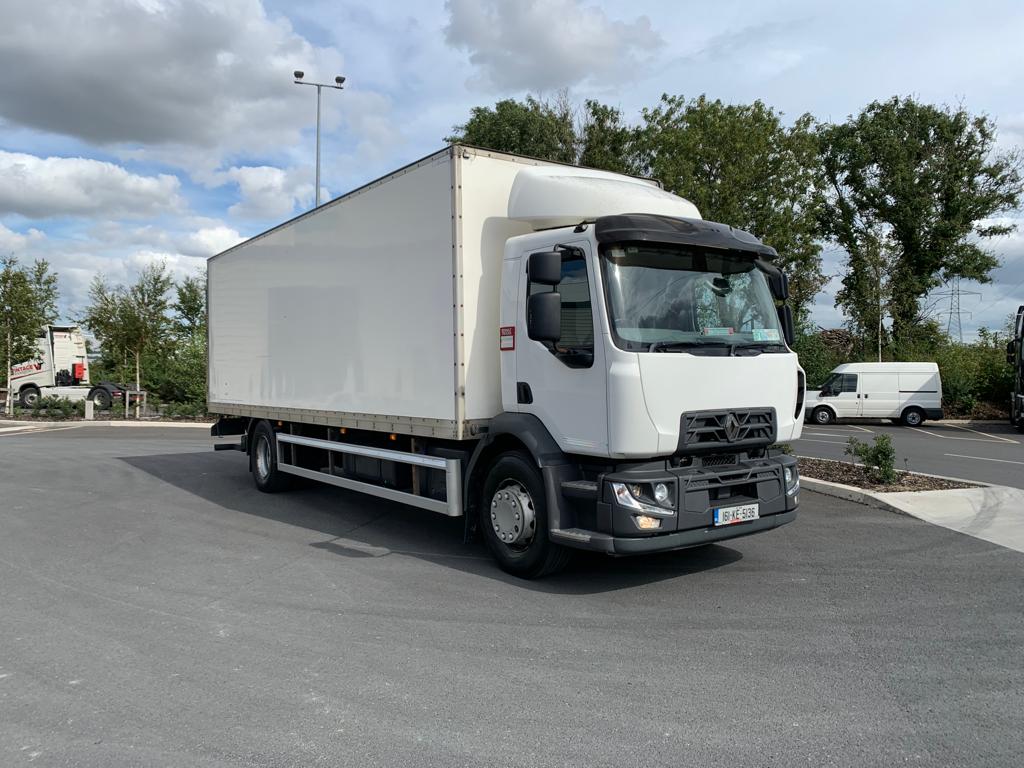How Wide Are Box Truck Doors: A Comprehensive Guide to Understanding and Optimizing Your Cargo Space
How Wide Are Box Truck Doors: A Comprehensive Guide to Understanding and Optimizing Your Cargo Space cars.truckstrend.com
In the world of logistics, moving, and delivery, box trucks are indispensable workhorses. From hauling furniture for a residential move to delivering commercial goods across states, these vehicles are designed for versatility and efficiency. However, a crucial dimension often overlooked, yet paramount to successful operations, is the width of a box truck’s door. This seemingly simple measurement dictates what can, and more importantly, what cannot be loaded, profoundly impacting efficiency, safety, and overall operational planning.
Understanding "How Wide Are Box Truck Doors" isn’t just about a number; it’s about comprehending the nuances of truck design, cargo compatibility, and the practicalities of loading and unloading. This guide will delve deep into the various factors influencing door width, provide typical measurements, offer practical advice, and address common queries, ensuring you’re well-equipped to make informed decisions for your next hauling task.
How Wide Are Box Truck Doors: A Comprehensive Guide to Understanding and Optimizing Your Cargo Space
Understanding Box Truck Door Types and Their Impact on Width
The type of door installed on a box truck significantly influences its usable opening width. While the overall external width of a box truck body is often standardized (e.g., 96 or 102 inches), the door mechanism can dramatically reduce the effective opening.
-
Roll-Up Doors (Overhead Doors):
- Description: These are the most common type, resembling a garage door. They retract upwards along tracks into the ceiling of the truck body.
- Impact on Width: Roll-up doors inherently reduce the usable door width. The tracks and internal mechanism required for the door to slide up occupy space on either side of the opening. This means the actual clear opening will always be narrower than the internal width of the truck body. They are generally robust and secure but offer less lateral clearance.

-
Swing-Out Doors (Barn Doors):
- Description: These doors operate like conventional double doors, swinging open outwards from the center or from one side.
- Impact on Width: Swing-out doors generally offer a wider, sometimes almost full, usable opening width, very close to the internal width of the truck body. This is because there are no internal tracks to obstruct the side clearance. They are ideal for loading wide items, pallets, or when using a forklift. However, they require more space behind the truck to open fully.


Side Doors:
- Description: Some box trucks, particularly those used for multi-stop deliveries, may feature smaller side doors.
- Impact on Width: Side doors are typically much narrower than rear doors and are designed for convenient access to smaller items or specific sections of the cargo area, not for large or bulky loads. Their width varies widely but is usually proportional to the convenience they offer, not maximum cargo entry.
-
Liftgate/Ramp Considerations:
- While not directly a door type, integrated liftgates or ramps can sometimes influence the effective opening. A platform liftgate, when deployed, might sit slightly proud of the rear opening, and its structure could marginally reduce the vertical or horizontal clearance, especially if not perfectly aligned or if it’s a "tuck-away" style.
Factors Influencing Box Truck Door Width
The actual clear opening width of a box truck door isn’t a universal standard. Several factors contribute to its variability:
-
Truck Size and Class:
- Small Box Trucks (e.g., 10-16 feet long): Often used for residential moves or small deliveries, their doors are proportionally narrower.
- Medium Box Trucks (e.g., 18-24 feet long): These offer a balance, with wider doors accommodating standard pallets.
- Large Box Trucks (e.g., 26 feet or longer): Designed for maximum cargo, these typically feature the widest doors, often approaching the truck’s full internal width, especially with swing-out doors.
-
Manufacturer and Model:
- Just like cars, different truck manufacturers (e.g., Ford, Isuzu, Freightliner, Hino) and specific models within their lines will have slight variations in door dimensions, even for trucks of similar overall length. Body builders also play a role in the final dimensions.
-
Cargo Type and Intended Use:
- Trucks designed for specific purposes might have optimized door widths. For instance, a truck primarily moving furniture might prioritize height and have a standard width, while one moving wide machinery might feature custom extra-wide swing-out doors. Trucks built for palletized freight will ensure their door width accommodates standard pallet sizes (40×48 inches).
-
Body Style and Construction:
- Insulated or refrigerated box trucks often have thicker walls to maintain temperature control. This added wall thickness can slightly reduce the internal width and, consequently, the usable door opening compared to a standard dry freight box.
Typical Box Truck Door Width Ranges
It’s crucial to remember that these are usable door opening widths, not the overall external or internal body width. Always measure your specific truck if precision is critical.
-
Small Box Trucks (10-14 ft):
- Typical Usable Door Width (Roll-Up): 70 to 80 inches (approx. 5.8 to 6.7 feet)
- Typical Usable Door Width (Swing-Out): 80 to 88 inches (approx. 6.7 to 7.3 feet)
- Note: Often used for local deliveries, apartment moves.
-
Medium Box Trucks (15-20 ft):
- Typical Usable Door Width (Roll-Up): 80 to 90 inches (approx. 6.7 to 7.5 feet)
- Typical Usable Door Width (Swing-Out): 88 to 96 inches (approx. 7.3 to 8.0 feet)
- Note: Popular for larger residential moves, commercial freight, accommodating standard pallets.
-
Large Box Trucks (21-26 ft+):
- Typical Usable Door Width (Roll-Up): 90 to 96 inches (approx. 7.5 to 8.0 feet)
- Typical Usable Door Width (Swing-Out): 96 to 98+ inches (approx. 8.0 to 8.2+ feet)
- Note: Ideal for full-house moves, heavy commercial transport, multiple pallets.
Measuring Box Truck Door Width: A Practical Guide
While specifications provide a general idea, always measure the actual truck you intend to use.
- Tools Needed: A reliable tape measure (preferably a long one that can span the entire width).
- For Roll-Up Doors:
- Open the door fully.
- Measure the clear distance between the inside edges of the vertical tracks on either side of the door opening. This is your effective usable width for cargo.
- For Swing-Out Doors:
- Open both doors fully, ensuring they are latched open to prevent accidental closure.
- Measure the clear distance from the inside edge of one door frame to the inside edge of the other door frame. This will be very close to the internal width of the truck body.
- Consider Height: While focusing on width, also measure the clear vertical opening. Roll-up doors often have a slightly reduced height due to the overhead mechanism.
Importance of Knowing Door Width
Understanding the precise door width is paramount for several reasons:
- Cargo Compatibility: The most obvious reason. It ensures your items, especially bulky furniture, appliances, or palletized goods, can actually fit through the opening without damage.
- Loading/Unloading Efficiency: Knowing the exact dimensions allows for smoother, faster, and more efficient loading and unloading, reducing labor time and potential frustration.
- Safety: Forcing oversized items through a narrow opening can lead to personal injury, damage to the cargo, or damage to the truck itself.
- Operational Planning: For businesses, it affects route planning, dock compatibility, and overall logistics. Knowing a truck’s true capacity means better resource allocation.
- Rental/Purchase Decisions: When renting or purchasing a box truck, matching the door width to your typical cargo dimensions is as critical as the truck’s length and weight capacity.
Challenges and Solutions Related to Door Width
- Challenge: Cargo is slightly too wide for a roll-up door, even though it would fit inside the truck body.
- Solution: For critical items, specifically request a truck with swing-out doors. If using a roll-up, try to tilt the item diagonally, if possible, or consider disassembling it. Always measure the item and the door opening carefully beforehand.
- Challenge: Liftgate mechanism obstructs the door opening.
- Solution: Be aware of the liftgate design. Some tuck-away liftgates might have less impact on the opening than others. Plan your loading sequence to account for any minor obstructions.
- Challenge: Inconsistent specifications from different rental companies or manufacturers.
- Solution: Always perform a quick physical measurement of the actual truck you will be using, especially for critical loads. Don’t rely solely on advertised figures.
- Challenge: Difficulty maneuvering items through a standard door.
- Solution: Use proper lifting and moving equipment (dollies, hand trucks, furniture pads). Ensure sufficient manpower. For extremely wide items, consider specialized flatbed trucks or professional movers.
Practical Advice and Actionable Insights
- Measure Twice, Load Once: This adage holds true. Always measure your largest or widest items and compare them to the actual door opening of the truck you intend to use.
- Consider the Entire Loading Scenario: Think about how you’ll move items through the door. Will you be using a pallet jack? Does the pallet fit through the opening with the jack handles?
- Don’t Just Rely on Truck Length: A 26-foot truck is useless if your widest item can’t fit through its 7.5-foot door. Prioritize door width and height as much as internal volume.
- Ask Specific Questions: When renting, ask about the usable clear opening width of the rear door, specifying the door type (roll-up vs. swing-out).
Table: Typical Box Truck Door Widths by Truck Size and Type
This table provides general approximate dimensions. Actual measurements may vary significantly by manufacturer, model year, and specific body builder.
| Truck Size (Approx. Length) | Common Door Type | Approximate External Body Width | Approximate Internal Body Width | Approximate Usable Door Opening Width (Roll-Up) | Approximate Usable Door Opening Width (Swing-Out) | Primary Use Cases |
|---|---|---|---|---|---|---|
| 10-14 ft (Small) | Roll-Up, Swing-Out | 96 inches (8 ft) | 90-94 inches | 70-80 inches (5’10"-6’8") | 80-88 inches (6’8"-7’4") | Small moves, local deliveries, personal use |
| 15-20 ft (Medium) | Roll-Up, Swing-Out | 96-102 inches (8-8.5 ft) | 94-98 inches | 80-90 inches (6’8"-7’6") | 88-96 inches (7’4"-8’0") | Mid-size moves, commercial freight, palletized goods |
| 21-26 ft (Large) | Roll-Up, Swing-Out | 102 inches (8.5 ft) | 98-100 inches | 90-96 inches (7’6"-8’0") | 96-98 inches (8’0"-8’2") | Large residential moves, heavy commercial freight, multiple pallets |
| Specialty/Oversize | Swing-Out | Varies, often >102 inches | Varies | N/A (often custom) | Up to 100+ inches (8’4"+) | Transport of wide machinery, vehicles, custom cargo |
Note on Pricing: The width of a box truck door itself does not have a separate price. It is an inherent dimension of the truck’s design. The overall cost of renting or purchasing a box truck is determined by its size, features (like a liftgate), and the duration of use or purchase price.
Frequently Asked Questions (FAQ)
Q1: Is the door width the same as the internal width of the box truck?
A1: Not always. For roll-up doors, the usable door width is typically narrower than the internal body width due to the tracks and mechanism. Swing-out doors generally offer a clear opening very close to the internal width.
Q2: Do roll-up doors provide the same usable width as swing-out doors?
A2: No. Swing-out (barn) doors typically offer a wider, clearer opening because they don’t have internal tracks that reduce the effective width, as roll-up doors do.
Q3: How do liftgates affect door width?
A3: Most modern liftgates are designed to minimize obstruction. However, some older models or specific designs (e.g., "tuck-away" liftgates) might marginally reduce the effective vertical or horizontal clearance, so it’s always good to check.
Q4: Can I get a custom-width door on a box truck?
A4: For commercially purchased trucks, yes, custom body builders can often construct specific door dimensions to meet unique cargo requirements. For rental trucks, you’re limited to what’s available in their fleet.
Q5: Why is door width so important for box trucks?
A5: It’s critical for ensuring your cargo physically fits, preventing damage to items or the truck, improving loading/unloading efficiency, enhancing safety, and making sure you select the right truck for your specific job.
Q6: What’s the average box truck door width?
A6: There isn’t a single "average" as it varies greatly by truck size and door type. However, for a common 15-20 ft rental box truck with a roll-up door, you can typically expect a usable width of 80-90 inches (6.7 to 7.5 feet).
Concluding Summary
The width of a box truck’s door, while often overlooked, is a defining characteristic that profoundly impacts the efficiency, safety, and practicality of any hauling operation. Understanding the distinctions between roll-up and swing-out doors, the factors influencing their dimensions, and the practicalities of measurement are essential for anyone using these versatile vehicles. By prioritizing precise measurement and considering your cargo’s specific needs, you can ensure smooth loading, prevent costly damage, and optimize your logistical endeavors. Always remember: measure twice, load once, and choose the right door width for the job.






